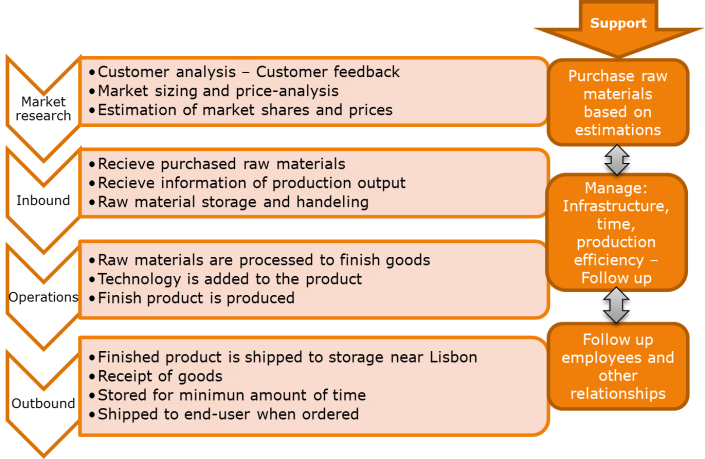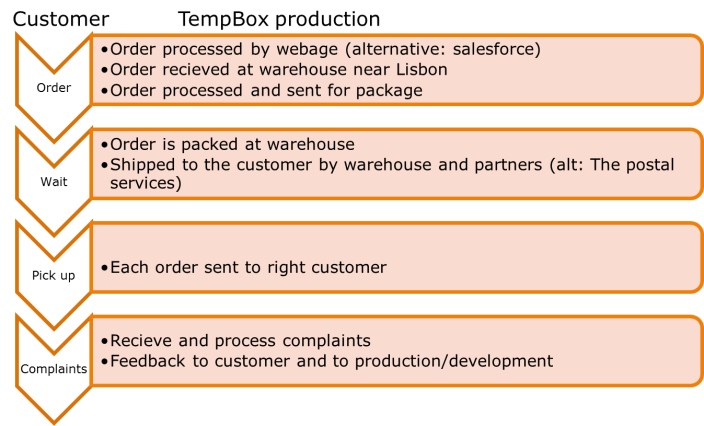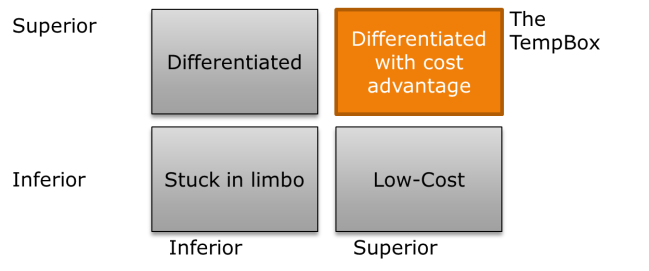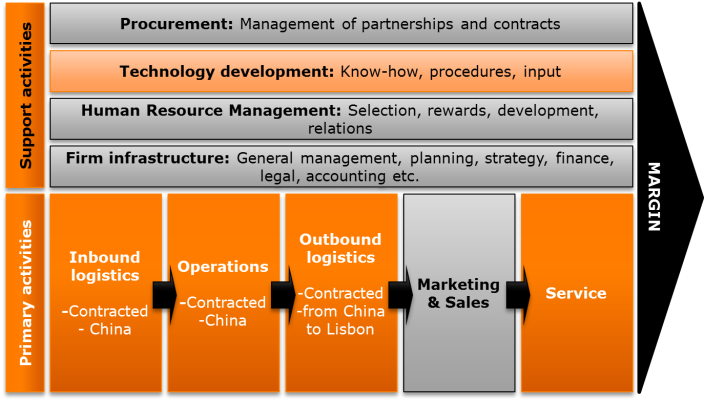Latest Event Updates
Session 12 – Final session
Hi guys and thank you for your attention!
We have gotten to the last session of the course and a journey is coming to its end. We have enjoyed this course very much and we look forward to getting our feedback from the professors.
Here are the recaps from session 12:
First of all every group presented their first draft of their pitch. We got some really valuable feedbacks and were able to see more clearly what we have to change. The rest of the class we mainly talked about the business plan, the pitch, deadlines, contents etc.
The Business Plan
The Business Plan is indeed very important, but as our professors say: The pitch and the team will be the thing that makes the investor decide on investing or not. The plan is for us, the team, and not for the investors.
However, as this is a course we have to deliver the buinessplan and it should be about:
1. What are we going to do?
2. How do we plan to do it?
3. How will we make money from it?
Our businessplan will tell the story about the TempBox, how it is today, how it will be in the future, who will buy it, why, and so on.
We went to all the stages of the plan and we talked about how to build ours to be great!
Thank you all for following us!
Best wishes from The Lean Explorers!
What we learned in session 11
Hi again guys and thank you for following us!
In session 11:
Interview summaries
We’ve finally got round to providing you with a summary of all the interviews conducted way back! This summary includes all respondents interviewed, both male and female and both professional and student!
Overall we got a good response from the interviews conducted, in general participants were eager to find out more and interested in how the product would work. Most participants claimed that they found it easy to access food during the school/work day; however they often had problems in obtained their preferred choice and bringing food from home usually wasn’t a suitable resolution because they preferred to eat warm food. Many participants mentioned saving money as a potential reason to bring foods from home, however this was never their key reason and they regularly eat out for lunch in the working week. The ability to keep food fresh was another reoccurring answer from the interviews, many participants stressed the importance of being able to keep their food fresh throughout the day if they brought it from home, and therefore we know that the heatable lunch box must use materials that keep the food fresh throughout the day. The final key take-away from the interviews was that participants find it inconvenient to carry a large box around with them all day, especially once the box becomes empty after lunch. They emphasized the need for flexibility so that the box would reshape to fit the ingredients in the box. As a result of these findings we know that we must source flexible, stretchy or bendable materials to make this lunch box convenient for the customers.
In comparison to the female students, the male students seemed much less interested in the ability to bring food from home and heat it. The female students were intrigued and keen to purchase a product similar to this with the same qualities. Professionals and workers on the go also liked the idea of being able to bring food and heat it on the go. The interest in this segment was much more balanced between males and females, with both genders being open to the idea.
Overall we feel that there is a market for this product, mostly because there seems to be a gap between customer needs and solutions available, with the majority of participants wanting to try our product. We will therefore continue to test and evolve it further.
The costing and pricing of the TempBox
As promised in the previous weeks, the costing of the TempBox has now been finalised. It has also now been updated to show the forecast costs for the next five years. These costs are all realistic as they are based on our forecast growth rates, suppliers have been contacted to receive accurate quotations for all quantities required. As you can see, the costs decrease from 10.59e to 9.48e in 5 years (based upon our fairly conservative growth rates). You can also see the lists of prices over the next five years, so download the excel attachment below to see more!
To accurately cost this, we have been in contact with many suppliers (mostly based in China) to receive these quotes. We contacted multiple suppliers for the same products so that the final suppliers could be decided upon based on price, quality an convenience. So if you’re interested, below is a word document summarising most the quotes received from the suppliers and also print screens of the quotes received.
Lessons Learned – Session 10
Lessons learned, session 10.
As usual we started the session with team presentations. We were first up and the presentation is available through slideshare or further down on this page. Our presentation went well and we got some constructive feedback which we can use to improve until next time, for instance we should make our organization chart contain fewer positions. A venture capitalist wants to know if the knowledge is in the team and one way to accomplish that is to present the organizational chart with team members and qualities only.
Theme of the lecture: cost structure and financial statements
What is the cost structure of our startup? This is a question which is challenging to answer. There is several assumptions which needs to be made after having identified the cost drivers in the company.
There are several types of costs where variable and fixed makes up the total. As we can see in the diagram, fixed will stay the same and variable costs varies with production volume.
One important feature for a startup is not having too much fixed costs. With a heavy load of fixed costs the business becomes more risky as fixed costs are much more difficult to do something about if needed.
–> We are going to out-contract most of our business and will not have large fixed costs. Our degree of variable costs will be higher.
Financial statements
To get funded, to gain profits and to be able to measure and monetize plans there is a need to develop a financial plan and forecast.
Financial decisions result from many different actions and choices. To get a future positive income there is a need to invest in assets, inventory, human resources etc. These investments will all influence the financial plan. The financial plan is an instrument to assist. Meaning that it will guide and assist the entrepreneurs to make decisions based on achieving the plan.
GOOD NEWS! The worst part is already done through planning for and making the business model. We can use information we already have researched and tested. Based on our findings we can build FORECASTS based on valid results rather than gut feeling.
Main components:
– Income statement
– Balance Sheet
– Cash Flow Statement
Capital needs
The first source of financing will be our saved capital or capital from family and friends. These amounts are often not sufficient and we need to get Venture Capital. For startups a business angels which is an investor in the near area interested in startup investments.
Angel investors base their investment decision on several criteria, but the MAIN CRITERIA IS THE TEAM and the size of opportunity. Judgment about people is a huge factor and it is made up in seconds à Make a good FIRST IMPRESSION!
This week we are working on our financial statements and pitch, we are improving our internet based tools, and perfecting the business model 2.0.
Lessons Learned – Session 9
This week we had a chance to practise our presentation for next week as both our teachers were away on business. Karina stepped in and asked us to present our business models and revenue streams to the class and provided us with loads of useful feedback for our presentation to the professors next week!
This weeks class was all about the key activities and key resources of our business. We had to really think about what the key activities our business would be undertaking and what we would need to make this happen. We discussed how the system has to be simple so that ordinary people can work it and achieve the goals set. To do this Karina discussed the use of processes in an organization and how they were vital to the efficient functioning of the company. These processes are a way to standardize and benchmark efficiency/quality/outcomes.
After carrying out exercises based on the process of our business we watched a really interesting video, that made us all realise that even though an activity may seem completely obvious and simple, we regularly forget to carry it out and often these are the most important activities. By forming check lists and processes these problems can be eradicated! The final part of the key activities section of the lecture was discussing value chains and to understand which parts of our business were they key parts and which were support activities.
After the break we discussed the key resources, so the organizational structure of the business, the roles played by the employees and their capabilities needed. We also discussed how it was better to hire employees with the right attitude as these people have a motivation for the job and to learn, than to hire someone with capability. This is because even though someone has the right capabilities for the job, if their attitude for the company or position is negative then it is extremely difficult to get integrate them into the company culture and to get the necessary results from them.
Partnerships were also discusses, we realised that we need to develop buyer-seller relationships to develop strategic supply and ensure that we gain a high quality low cost supply that meets our demand at all times.
Having learned all this, we now just need to put it all into practise for next weeks presentation and read the next pages of the required reading!
The presentation of week 10
This week we decided to change our presentation layout for a leaner and cleaner one – Please enjoy our best presentation so far!
The TempBox Processes
TempBox processes
To complement the value chain we have broken it down in details into an overview of the processes that is happening from before we attract a customer to the time of delivery.
These processes are based on what we see ourselves doing the first years before integrating more of the activities vertically.
We do not however use the general value chain process. As we are a startup we have decided to do some changes to the structure in the value chain when it comes to processes.
As you can see we have chosen to have market research as the first element in the process, of course this is a continuous process, however we believe this to be at the very start of the production. Firstly, we are already today testing the market, doing research on it, market sizing, price calculations etc. without having started producing. Secondly, the TempBox, as a start-up, the first thing to figure out – Is there a problem that needs to be solved for the customers out there, and can we actually solve it?
The rest of the processes are rather straight forward and do not need much explanations. However on the right side we chose to add some of the most important support activities in the daily operations.
There is the procurement: purchasing materials for production, the infrastructure in the general which is management of the business like measuring performance indicators in outputs, infrastructure (IT and physical), efficiency, material usage, cycle times (time from order to shipped) etc. And also the human relations, if we want to hire people they need training, feedback, rewards, motivation and so on.
The Customer process
The customer process is broken down into an illustration of the process from ordering to receiving and perceiving the value received.
The value chain of the TempBox
First we want to present our vision and mission (At the time they are not separated as they need to be revised), and our strategic position.
The vision and the mission
«We want to change how people eat on the go – We will give people the freedom of choice, and the ability to save both money and time by providing them a box which keeps the food fresh, and can easily heat it up in several electrical output sockets»
The visions/mission is based (as it should be) on our initial idea of heating food for people on the go. We say we want to change it, not because no-one eats food from a lunch box today, but as we believe people deserve to be able to eat food that is delicious, despite it coming from a lunch box. We will give our customers the freedom of choice to eat whatever, wherever they want, and again of course, heat it up in several sockets!
The strategic perspective
Our strategic position has changed from being low-cost to be a differentiated product – with a patent on the design and alternatively the technology, we will have the ability to take a great market share in the heat-able box industry market. At the same time, as we will come back to, we will over time work for obtaining economics of scale and focus on cost-saving at the same time as we deliver a sleek and stylish functional product with the ability to heat and, customer orientation and warrantee benefits. This is our strategic position:
The value chain:
As we have a tangible product it makes more sense to us to have a value chain. To us, a value chain is the strategic management of cost positioning. The linkages and inter-relationships in the value chain is presented as a flow of activities which can, and will be optimized.
With the value chain, we are decomposing the activities of our firm into strategically important units (Stabell and Fjeldstad 1998). With this tool we can more easily see what is important for the TempBox to focus on in house, and what can and should be out contracted at this time.
We are initially the ones with the idea. We will contract most of our key activities – however our value chain is presented with the primary activities in it. We have done this to illustrate how our value chain looks like when you link all the activities that are contracted out together.
We have made the choice to contract out our key activities as this is consistent with our vision and long term strategic objective – We want to be the idea, the brain behind the project. We want to focus on our core competence which is the ideas, market research, customer orientation, partnership management and management and coordination in the company. When we learn more about the industry, production etc. we might consider demolishing some of the contracts and have logistics and production ourselves. We believe that with learning and time we will be able to take most parts of the value chain in house and operationalize and smooth the process so that it will be less costly than managing and paying for the contracted businesses which we do not control and have to depend on.
This is our resulting value chain, the grey we will do ourselves, the rest we will contract out, mostly to China.
Inbound logistics: material handling and warehousing – We will not do this: contracted. We have sourced materials and productions in China, therefore all raw materials and handling will be dealt with in China. The product will then be shipped to Lisbon via Garland and dealt with in-house.
Operations: transforming material to the final product – outsourced to production companies in China
Outbound logistics: Order processing and distribution – The final product will be storing in an internal warehouse ready to be shipped to the end consumer. Products will enter the warehouse via an IT system, nothing will enter or leave the warehouse without being registered by the system. Products will be boxed by the warehouse and prepared for distribution. Once the product is prepared the delivery to the end consumer will be outsourced to delivery experts UPS or DHL. Outbound logistics will also include supply and demand planning to ensure that stocks are always at the appropriate levels. This will be done in-house by the warehouse manager who will use the IT system and analyse trends and past data to secure the optimal level of inventory.
Marketing services: We will carry out the marketing services ourselves, however as we grow there is a possibility that this could be partly outsourced (i.e. large scale marketing to India). The marketing services involves market research for estimation of demand which we have already estimated for the first year, however it is a continuous process. Here we will generate demand through the use of marketing tools (this process involves creating awareness through internet-based free tools which has already commenced (numbers will come later)), we will manage our channels through this which is closely aligned with partnerships (we will talk about this later). This box is also about communication with clients, refining the product etc. Hence as this part is our core competence together with the management of all partnerships, we will do this ourselves.
The support activities
We will be carrying out the support activities ourselves. This is where our main business lies. Procurement and management of partnerships will be done by us. It will involving liaising closely with supplier to secure appropriate materials at the best costs, we will come back to this point later in the presentation.
Technology is a lighter shade of orange due to the fact that we are not engineers and we have to partly outsource the technology development. However we will play a role in the development and improvements on the product. Through the feedback of our customers, market research, kinks and problems, we will learn and develop the product further.
Cost and value drivers in the value chain
The cost drivers in the value chain of the TempBox are highly linked to the fact that we are contracting out most our business. We do not have scale advantages, but this will highly influence us in the future as we have one product and a very narrow scope, also we will be larger and better. Highly intertwined with scale are the Linkages and Inter-relationship. At the time we do not believe our value configuration to be optimal due to contracting out most of the primary activities.
Reference:
Stabell, C. B. and Ø. D. Fjeldstad (1998). “Configuring value for competitive advantage: on chains, shops, and networks.” Strategic management journal 19(5): 413-437.



